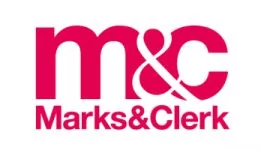- within Immigration topic(s)
When drafting a patent application that the applicant hopes will become a standard essential patent (SEP) once granted, there are a number of considerations that need to be kept in mind.
The claims form a critically important part of any patent application, as it is the claims which define the protection which is sought. It is the features recited in the claims of a granted patent which will need to "map" to a standard in order for it to be deemed a SEP.
A standards invention may involve novel aspects at multiple entities that are in communication with each other. In a telecommunications context this may involve a user equipment (e.g. a mobile phone) in communication with a network entity (e.g. a base station). When drafting claims for such a standards invention it is important that the patent application includes claims directed to most, if not all, of the entities that are performing novel steps. Having claims specifically targeted at different entities can simplify licensing negotiations and make enforcement actions more straightforward.
Keep in mind that, at the time of drafting the patent application, it may be envisaged that a particular function or module will perform the invention, but after standardization discussions it may in fact be an alternative function or module that performs the invention in the standard. As an example, in a telecommunications context it may be envisaged that a session management function (SMF) in the core network will perform the invention, but when the standard is adopted it is an alternative function in the core network that performs the claimed steps. As a result, it is important to use broad terminology in the claims to recite the component performing the invention to ensure that the claims remain mapped to the standard.
As technologies advance, the standards develop over time. For example, according to 3rd Generation Partnership Project (3GPP) standards a base station in 3G is called a "NodeB", in 4G it is referred to as an "eNodeB", and in 5G it is called a "gNB". When drafting a patent application for a standards invention, it is important to use terminology consistent with standardization documents, whilst at the same time ensuring broad terminology is used so that if a SEP is obtained, the claims are not interpreted as being limited to a particular technology. It is also critical to regularly review the claims of pending applications in light of evolving standards, in case this identifies a need to adjust the claim wording or avoid a specific limitation.
Marks & Clerk patent attorneys have vast experience in drafting SEP patent applications according to many different standardised technologies, and use these techniques and many more, to prepare robust patent applications suitable for alignment with standards.
The content of this article is intended to provide a general guide to the subject matter. Specialist advice should be sought about your specific circumstances.


